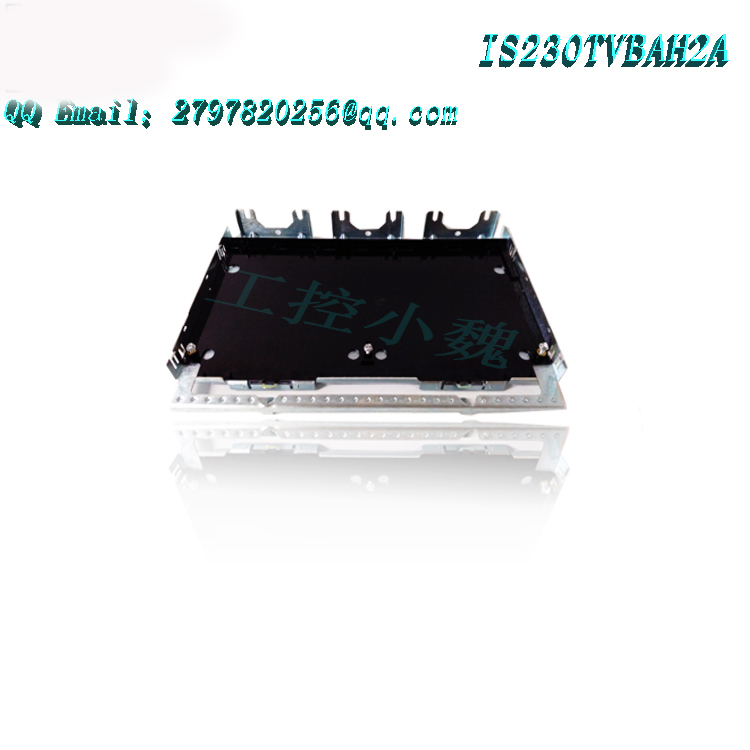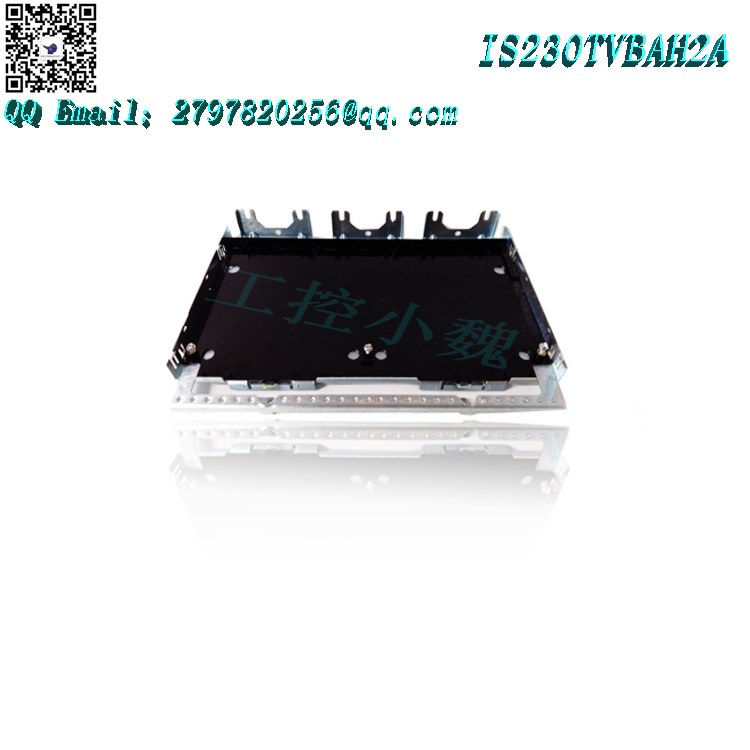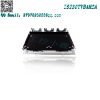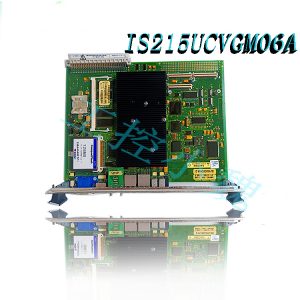Description
IS230TNCIH4C – The contact input DIN rail module is available in stock and will be shipped on the same day.
IS230TNCIH4C – The contact input DIN rail module is in an unused and rebuilt state.
To get the best discount on IS230TNCIH4C – Contact Input DIN Rail Module, please contact us and we will reply to you within 24 hours.
Product Description
The IS230TNCIH4C board is sold by General Electric as a printed circuit board. This circuit board can be installed in thirteen or twenty-one VME slot type racks. When used in simplex architecture type systems, it is typically used in conjunction with control modules, but if the selected architecture is triple redundant, it will be used in conjunction with IONet, main processor cards, and control modules.
The TNCI model can use two main types of communication, namely Unit Data Highway (a LAN type communication based on Ethernet) and IONet communication. Please note that UDH communication drivers are typically associated with the main processor card located within the Mark VI system.
Although the IS230TNCIH4C board consists of more than ten capacitors, resistors, and even smaller components, the main visual components of this model are two terminal blocks, three Sub-D pin connectors, two female plug type connectors, and twenty-five metal oxide varistors. The two terminal blocks are labeled TB1 and TB2, located near the bottom edge of the board, and the metal oxide varistor is directly above the two terminal blocks. Three sub D pin connectors are located near the top edge of the board, each consisting of 37 pins.
As mentioned above, the IS230TNCIH4C model will be used together with the control module, but in some cases, a backup protection module may also be required.
Function Description
IS230TNCIH4C is a module developed by GE. It is part of the Mark VIe control system. It is compatible with different rack configurations. This PCB is carefully designed to seamlessly fit into 13 or 21 VME slot racks, providing system integrators and engineers with flexibility in setting choices. This adaptability ensures that the board can be seamlessly integrated into various operating environments, thereby enhancing its practicality in various industries. This board plays a crucial role in the control system architecture, facilitating seamless operation of both simplex and triple redundant systems. When used in a single architecture, it typically collaborates with control modules to enable the system to perform tasks accurately and efficiently. In this case, the functionality of the board enhances the overall performance of the control module, ensuring reliable and optimized operation. In TMR configuration, this board plays a broader role, in addition to the control module, it is also consistent with the IONet and main processor card. This extended integration helps to establish a powerful and resilient control system that can mitigate potential failures through redundancy. By coordinating with multiple components, the board can ensure continuous and uninterrupted operation, which is crucial in situations where shutdown is not possible.
Features
There are a total of 25 metal oxide varistors on the board. The board also includes two three pin female plug connectors.
This circuit board can be installed in VME slot style racks with 13 or 21 slots. When used in a simplex architecture type system, it is usually used together with the control module, but if the selected architecture is triple redundant, it will be used together with IONet, main processor card, and control module.
The TNCI model can be used for two types of communication: unit data highway (a LAN type communication based on Ethernet) and IONet communication. UDH communication drivers are typically associated with the main processor card.-1.jpg)
Although the board contains many capacitors, resistors, and other small components, the main visual components of the model are two terminal blocks, three Sub-D pin connectors, two female plug type connectors, and twenty-five metal oxide varistors. The two terminal blocks labeled TB1 and TB2 are located near the bottom edge of the circuit board, and the metal oxide varistor is directly above the two terminal blocks. Each of the three sub D pin connectors located near the top edge of the board has 37 pins.
System characteristics
The speed control system of a small turbine requires a simplified system architecture. Using simplex control can help save money and space. The larger T-shaped terminal blocks used in TMR systems can be replaced with smaller DIN rail mounted terminal blocks. Since the D-type terminal board is directly connected to the control chassis and communicates with the I/O board, there is no need for IONet.
The VCMI board in the VME rack enables bidirectional communication between the I/O processor board and the controller. Other system components (such as operator interfaces or PLCs) communicate using the Ethernet port of the controller. The Genius port of the controller can be used to connect additional PLC I/O to the system.
The system adopts a low-voltage variant of the common VME rack power supply, powered by a 24 V DC power supply. The number of inputs and outputs, as well as the grounding facilities, are different, and the board does not support TMR. However, the signal conditioning on the DIN type terminal board is always the same as on the T-type board, and the above I/O standards apply.
The use of permanently installed high-density Euro Block wiring terminals can save space. The connector on the module can accommodate up to two or one 12 wire. The most common wire size is 18
Product attributes
Communication type
UDH (Universal Data Highway) or INet (Input/Output Network): These communication types facilitate seamless data transmission and exchange within the system. UDH provides a multifunctional data highway, while IONet provides efficient input/output networks, each serving specific functions and adaptability.
Humidity
Working range: 5% to 95%: This product is designed to work effectively over a wide range of humidity levels, ensuring functionality and reliability even in environments with varying humidity conditions. It is specially designed to withstand non condensing humidity levels, thereby minimizing the risk of moisture related issues.
Redundant type
Simplex: No redundant operation, simplex configuration can run without backup, providing a single path for operations.
Dual: Using redundancy from two identical components or systems, dual configuration ensures backup in the event of a failure, thereby improving reliability and minimizing downtime.
TMR (Triple Modular Redundancy): TMR utilizes triple components or systems to provide higher levels of redundancy, where three identical units work simultaneously. By comparing outputs and correcting errors when differences occur between units, it achieves fault tolerance and improves reliability.
These attributes collectively contribute to the product’s versatility, resilience, and adaptability in various operating environments, ensuring reliable performance and minimizing potential interruptions.-1.jpg)
System INet components
In the field of IONet system components, accuracy and compatibility are crucial. These components are the lifeblood of a well running Mark VIe Control IONet, and understanding their complexity is key to ensuring seamless operation. Here, we delve into the core elements of the system:
Verified fiber optics and switches: ensuring reliability
The backbone of IONet controlled by Mark VIe relies on single-mode fiber (SMF), which is a validated and approved data transmission medium.
SMF ensures efficient and reliable data transmission over long distances, which is a key aspect of control systems that cannot compromise data integrity.
N-Tron 508FXE2-SC-15 Switch: In this powerful system, the N-Tron 508FXE2-SC-15 switch is the only validated and approved choice.
Choosing other switches may bring risks, leading to operational issues and even damaging important equipment.
Limiting series switches: optimizing network performance
Do not exceed five switches placed in series: In order to maintain network performance and stability, an important rule of thumb is not to exceed five switches connected in series. Exceeding this limit may compromise network efficiency, latency, and overall system reliability.
Topology design: shaping data flow
Design the network topology as a star configuration: In order to achieve optimal data flow and reduce latency, it is recommended to design the network topology as a star configuration. In this setup, each switch is directly connected to a central hub or controller, minimizing data traversal and maximizing efficiency.
System Architecture Compatibility
Simplex architecture
In a simplex architecture, the board is typically paired with a control module.
This configuration is suitable for scenarios where single redundant operation is sufficient.
Triple Redundancy (TMR) Configuration
In TMR configuration, this board plays a crucial role together with IONet, main processor card, and control module.
The TMR setting aims to achieve maximum reliability and fault tolerance, ensuring system continuity even in the event of component failure.
Communication type: multifunctional connection
Highway Data Unit (UDH)
UDH is a type of Ethernet based LAN communication.
UDH is typically associated with the main processor card within the Mark VI system, facilitating high-speed data exchange.
INet communication:
This board seamlessly integrates with IONet communication, which is a multifunctional protocol that enables efficient data sharing within the control system.
IONet is an important communication channel to ensure the coordination and operation of various system components.
Features
Signal integration: Turbine control systems typically involve multiple sensors and switches, providing necessary feedback and control inputs. These signals may include signals from temperature sensors, pressure sensors, flow meters, safety switches, or emergency stop buttons. The contact input DIN rail module is used to collect these signals and input them into the control system for monitoring and decision-making.
Protection and Isolation: These modules typically provide electrical isolation and protection to prevent electrical interference and ensure the safety of the control system. Electrical noise may exist in the turbine environment, and isolation helps ensure that unwanted signals or electrical interference do not affect the operation of the control system.
Signal processing: This module can also perform basic signal processing functions, such as de jitter switching, converting analog signals to digital format, or scaling input values to the desired range for further processing. This processing is crucial to ensure that the signal adopts a format suitable for the control algorithm.
Status indication: Many contact inputs to the DIN rail module provide visual or remote status indications to inform the operator or central control system of the status of the inputs. This is crucial for quickly identifying any issues or security concerns.
Communication and integration: Some modules may have communication functions that allow them to transmit input data to the main turbine control system. This integration enables real-time monitoring and control, enabling operators to make informed decisions based on received inputs.
Fault detection and safety: Modules can be programmed to detect fault conditions or safety critical events. For example, if the safety switch is triggered or the sensor value exceeds acceptable limits, the module can initiate an emergency shutdown program or trigger an alarm to ensure the safety of the turbine and surrounding environment.
Frequently asked questions
What is IS230TNCIH4C?
This is a module developed by GE
What is a VME slot rack?
VME slot rack is an enclosure used to accommodate electronic circuit boards. It provides standardized interfaces for connecting various modules together and specifies the mechanical dimensions, power requirements, and communication protocols of VME modules.
What is Triple Redundant Architecture?
The triple redundancy architecture uses three independent modules or components to perform the same function, providing backup and redundancy in the event of a failure. This type of architecture is typically used for critical or security critical applications.
What is Unit Data Highway (UDH) communication?
The Unit Data Highway (UDH) is an Ethernet based LAN type communication used in the TNCI model. It is associated with the main processor card and is one of the two communication types available for this model.
What types of redundancy do motherboards support?
The board supports three types of redundancy: simplex, duplex and TMR (three module redundancy). The choice of redundancy depends on the system architecture.
How is this board usually installed and what type of rack can it be used in?
This board can be installed in 13 or 21 VME slot style racks. The installation configuration depends on the specific application and system requirements.
What is the function of the wiring terminals on the module?
Two terminal blocks (TB1 and TB2) are located near the bottom edge and are used to connect various components and signals within the system.
What are the functions of the three Sub-D pin connectors?
Three sub D pin connectors (each with 37 pins) are used for specific data and signal connections, which aid in the functionality of the circuit board within the system.
All products on this website are special products, and market prices have been fluctuating,
The specific customer service quotation shall prevail, as the product is a new product and the price is not genuine,
Please confirm the model, product, price, and other detailed information with customer service before placing an order. The website has been used,
The new one is for sale, please contact customer service to communicate.
Warehouse stock recommendation:
IS230TNTRH1C
IS230TNTRH1C
IS230SNRTH2A
IS230SNRTH2A
IS230SNRLH2A
IS230TNEAH2A
IS230SNAIH4A
IS230TCATH1A
IS230PCAAH1B
IS230PCAAH1A
More……



.jpg)
.jpg)

-100x100.jpg)
-100x100.jpg)
-300x300.jpg)

admin –
The IS230TNCIH4C board is sold by General Electric as a printed circuit board. This circuit board can be installed in thirteen or twenty-one VME slot type racks. When used in simplex architecture type systems, it is typically used in conjunction with control modules, but if the selected architecture is triple redundant, it will be used in conjunction with IONet, main processor cards, and control modules.